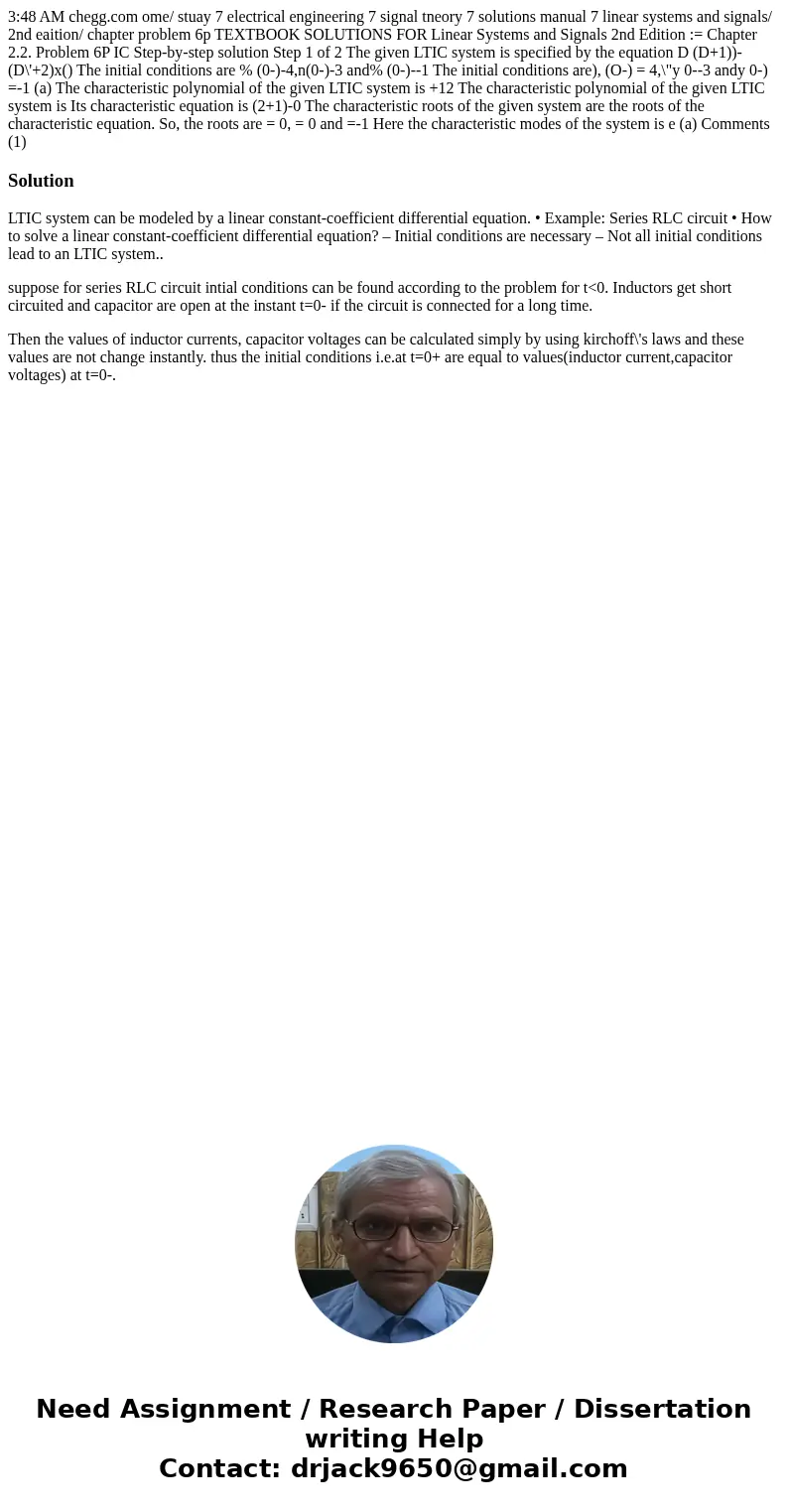348 AM cheggcom ome stuay 7 electrical engineering 7 signal
3:48 AM chegg.com ome/ stuay 7 electrical engineering 7 signal tneory 7 solutions manual 7 linear systems and signals/ 2nd eaition/ chapter problem 6p TEXTBOOK SOLUTIONS FOR Linear Systems and Signals 2nd Edition := Chapter 2.2. Problem 6P IC Step-by-step solution Step 1 of 2 The given LTIC system is specified by the equation D (D+1))-(D\'+2)x() The initial conditions are % (0-)-4,n(0-)-3 and% (0-)--1 The initial conditions are), (O-) = 4,\"y 0--3 andy 0-) =-1 (a) The characteristic polynomial of the given LTIC system is +12 The characteristic polynomial of the given LTIC system is Its characteristic equation is (2+1)-0 The characteristic roots of the given system are the roots of the characteristic equation. So, the roots are = 0, = 0 and =-1 Here the characteristic modes of the system is e (a) Comments (1) 
Solution
LTIC system can be modeled by a linear constant-coefficient differential equation. • Example: Series RLC circuit • How to solve a linear constant-coefficient differential equation? – Initial conditions are necessary – Not all initial conditions lead to an LTIC system..
suppose for series RLC circuit intial conditions can be found according to the problem for t<0. Inductors get short circuited and capacitor are open at the instant t=0- if the circuit is connected for a long time.
Then the values of inductor currents, capacitor voltages can be calculated simply by using kirchoff\'s laws and these values are not change instantly. thus the initial conditions i.e.at t=0+ are equal to values(inductor current,capacitor voltages) at t=0-.

 Homework Sourse
Homework Sourse